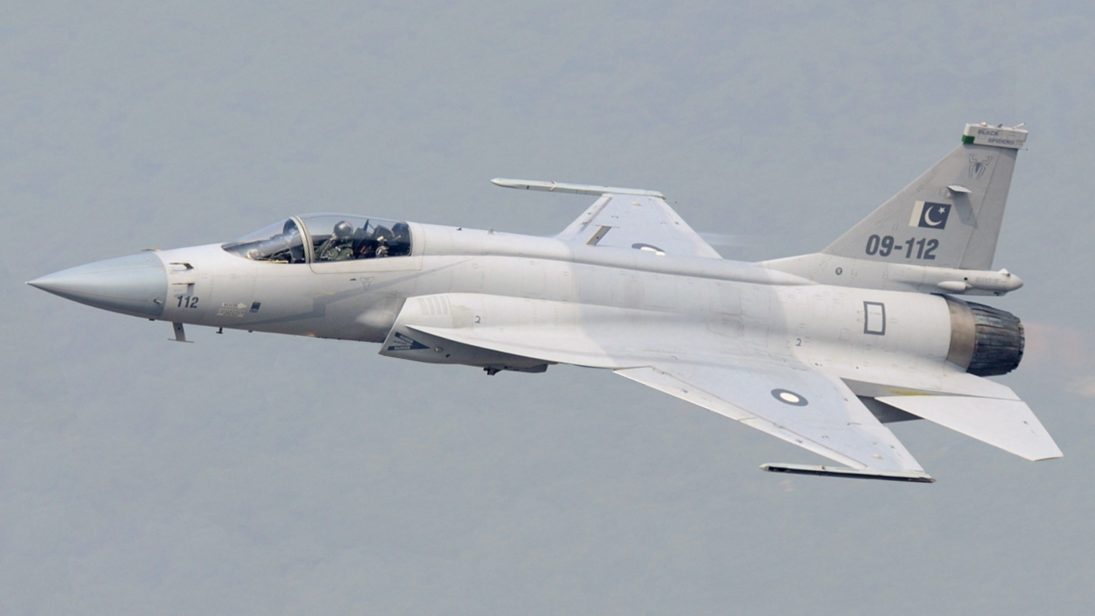
Before the overt nuclearization of South Asia in 1998, three major wars between India and Pakistan highlighted the latter’s struggle to bridge the conventional imbalance. During this time, Pakistan’s latent nuclear capability provided an effective deterrent, which served to offset the conventional and nuclear threats from India. However, twenty years since India’s entrance into the nuclear club, followed by Pakistan, conventional deterrence remains integral to the maintenance of strategic stability in South Asia. In view of these developments, this article aims to analyze Pakistan’s strategic direction since the nuclear tests, particularly in terms of its conventional military capabilities.
How significant are conventional capabilities in the presence of nuclear weapons? For different kinds of wars (i.e. limited, conventional, or nuclear), a credible deterrent posture constitutes both nuclear and advanced conventional weapons. It is believed that modern conventional weapon systems could substitute for actions earlier exclusively limited to nuclear weapons, and even produce the same effect as nuclear weapons as far as counterforce is concerned. This implies that in the future, wars with or without the limited use of nuclear weapons can occur. As observed in the words of Marshal Nikolai Ogarkov, the Soviet Chief of the General Staff, the employment of such advanced conventional weapons would constitute a “qualitative leap in the development of conventional means of destruction, which would make it possible to use conventional systems in qualitatively new incomparable, more destructive forms than before.”
India’s Military Strategy
In the case of South Asia, India’s quest to explore the space for limited conventional war below Pakistan’s nuclear thresholds has shifted the strategic debate in the region to the merits of limited aim strategies, i.e. Cold Start, that might be pursued despite Pakistan’s nuclear capabilities. In response to potential Indian proactive war strategies, Pakistan has introduced the low-yield, short-range ballistic missile system (SRBMs), (HATF-IX)/Nasr, with the intention of using it as a last resort against Indian forces in the case of impending failure of conventional defenses. In this way, Pakistan has adopted a cost-effective solution to Indian proactive war strategies that complements its conventional forces, neutralizes India’s growing technological edge, and bridges the conventional disparity between the two rivals.
In response to Pakistan’s introduction of Nasr, India has begun to shift away from the traditional logic of conventional deterrence towards the use of conventional weapons and dual-capable missiles to bolster its deterrence by punishment strategy. With the aim of destroying Pakistan’s strategic and high-value assets (such as exposed Nasr batteries), India is pursuing new conventional weapon technologies to form the basis of its counterforce capabilities, including precision guided munitions, missile defenses, stand-off weapons, and cyber operations.
Pakistan’s Conventional Developments
Although Pakistan’s full-spectrum deterrence doctrine has succeeded in deterring an Indian full-scale military attack in the past, the persistent conventional imbalance and India’s revisions to its conventional doctrines have pushed Pakistan to modernize and upgrade its conventional capabilities.
Although Pakistan’s full-spectrum deterrence doctrine has succeeded in deterring an Indian full-scale military attack in the past, the persistent conventional imbalance and India’s revisions to its conventional doctrines have pushed Pakistan to modernize and upgrade its conventional capabilities.
Besides Nasr, Pakistan is improving its existing conventional platforms to deter (by denial) Indian proactive conventional war strategies and any potential conventional counterforce aims. To this end, it is updating its conventional strategies, conducting military exercises, improving its weapons systems, and seeking new defense partnerships. For instance, Pakistan developed an offensive-defense “Riposte” strategy after 1989. The strategy calls for a Pakistani Army strike corps to launch an offensive in an event of war, with the aim of occupying Indian-territory near border while holding back the initial hostile advances. To supplement this doctrine, Pakistan has reorganized its strategic reserves, i.e. the Army Reserve North and Army Reserve South. In addition, Pakistan’s six defensive Corps are situated in close proximity to Indian territory; these are the country’s initial defenses against Indian conventional aggression. In addition, conventional military exercises—such as Azm-e-Nau, New Concept of War Fighting (NCWF), High Mark, Strike of Thunder, and Sea Spark—are positioned to enhance the synergy of Pakistan’s three military services and combat readiness along the eastern border.
To further consolidate conventional deterrence against India, Pakistan is actively engaged in negotiations and contracts for upgrades and procurement of conventional armaments from various suppliers. Initiatives in the conventional domain such as additions to and/or modernization of its cruise missile program, air defenses, unmanned aerial vehicles, and surface and sub-surface fleet (see below table) will help Pakistan implement a limited or large-scale conventional military operation against India if the need arises by denying the Indian Air Force the ability to achieve air superiority over Pakistan. Furthermore, improvements in air defenses will enable Pakistani ground forces to conduct defensive and counter-offensive operations against Indian integrated battle groups (IBGs) or strike corps.
Sources from news articles
The additions will also help reduce the yawning gap between the Indian and Pakistani navies in surface and sub-surface warfare, enhancing the Pakistan Navy’s ability to protect the country’s coast line and Exclusive Economic Zone (EEZ), including its port installations in Karachi and Gwadar, and defend Pakistan’s vital sea lanes of communication (SLOCs) against a possible Indian blockade and interdiction during a conflict. These naval capabilities are critical to sustaining a war effort, even during a short conflict or limited war.
Another change is afoot in Pakistan’s expanding defense partnerships. In the past, China has played a primary role in assisting Pakistan in a multi-dimensional strategic partnership that comprises civilian nuclear energy, conventional arms sales, and military exercises. However, more recently, Pakistan has included Turkey, Italy, and Russia in its list of partners for conventional weapons. These new defense partnerships, acquisitions, and upgrades will help Pakistan to maintain a credible level of conventional preparedness and contain India’s conventional weapons asymmetry.
Consequences for Regional and Strategic Stability
[Pakistan’s conventional developments] provide a range of response options and increase the nuclear threshold, since Pakistan will not be forced to retaliate with nuclear weapons as an initial response to a limited conventional incursion.
The abovementioned developments indicate that Pakistan is pursuing a dual-track military modernization program to establish a conventional deterrent capable of combating India’s denial strategies as well as its limited war aims. These capabilities will provide a response to conventional threats and growing asymmetry with India, which has been the world’s top net importer of conventional weapons in the recent past. Moreover, they will provide a range of response options and increase the nuclear threshold, since Pakistan will not be forced to retaliate with nuclear weapons as an initial response to a limited conventional incursion. A credible conventional deterrent will decrease the chances of a conventional confrontation in the South Asian strategic landscape.
Editor’s Note: Ten years after the 26/11 attacks stunned Mumbai and nearly led to a military confrontation between India and Pakistan, the nuclear-armed rivals continue to update and transform their conventional and nuclear military doctrines, postures, and strategies. SAV contributors Joy Mitra, Ali Ahmed, Maimuna Ashraf, and Sannia Abdullah reevaluate whether India and Pakistan are exhibiting strategic direction or drift. Read the series here.
***


